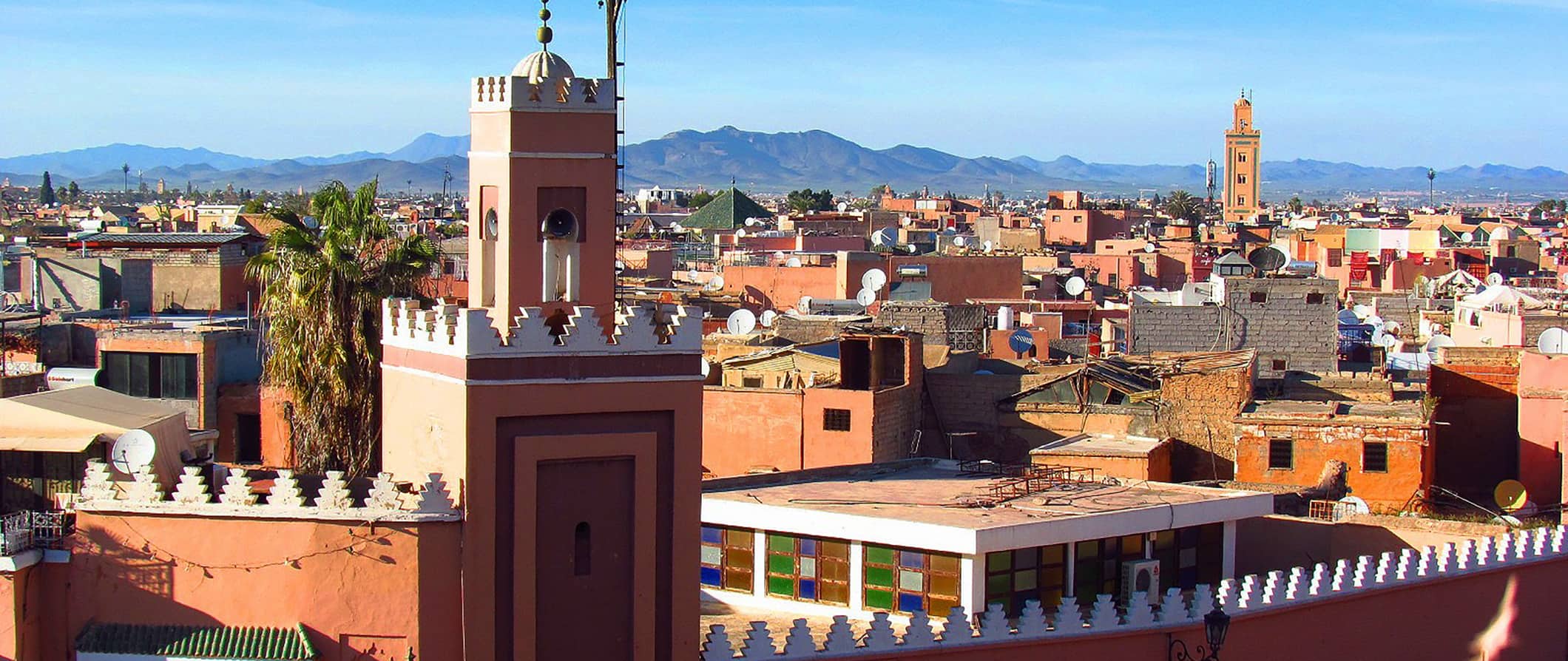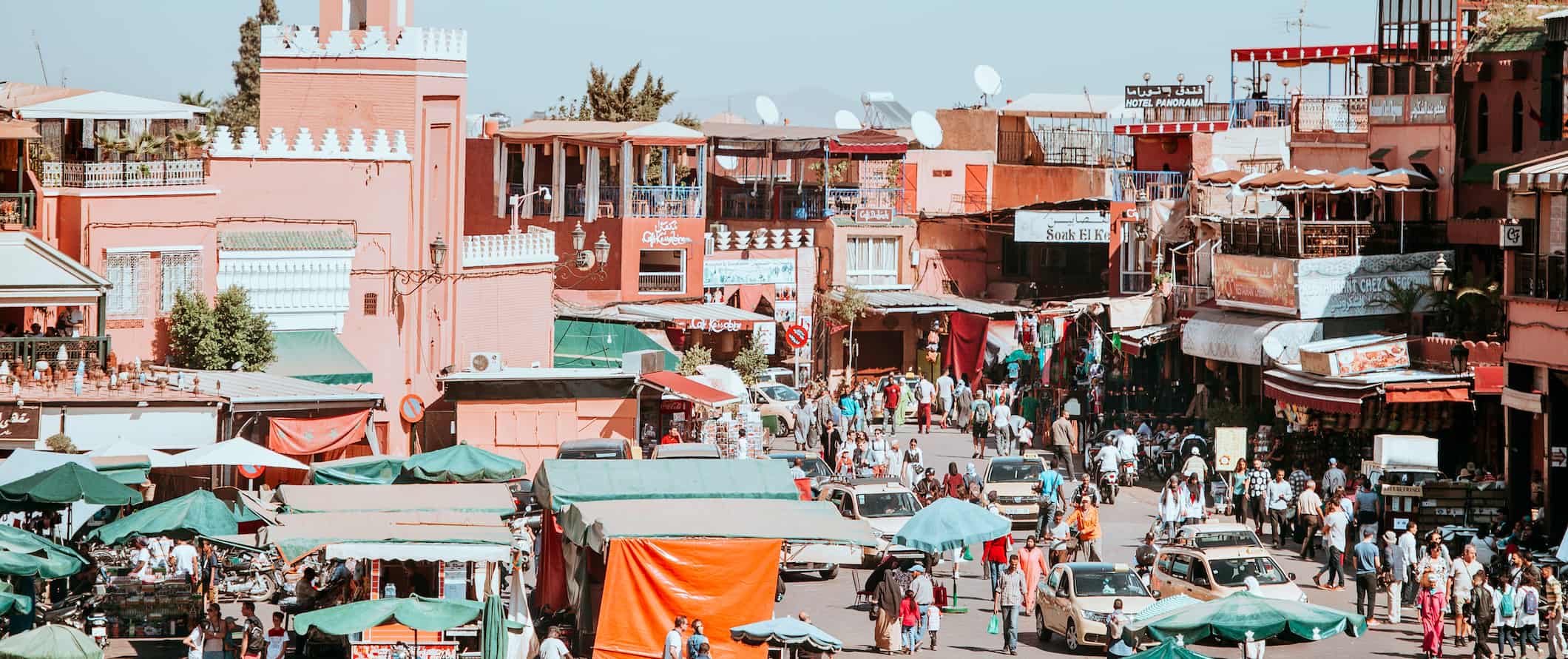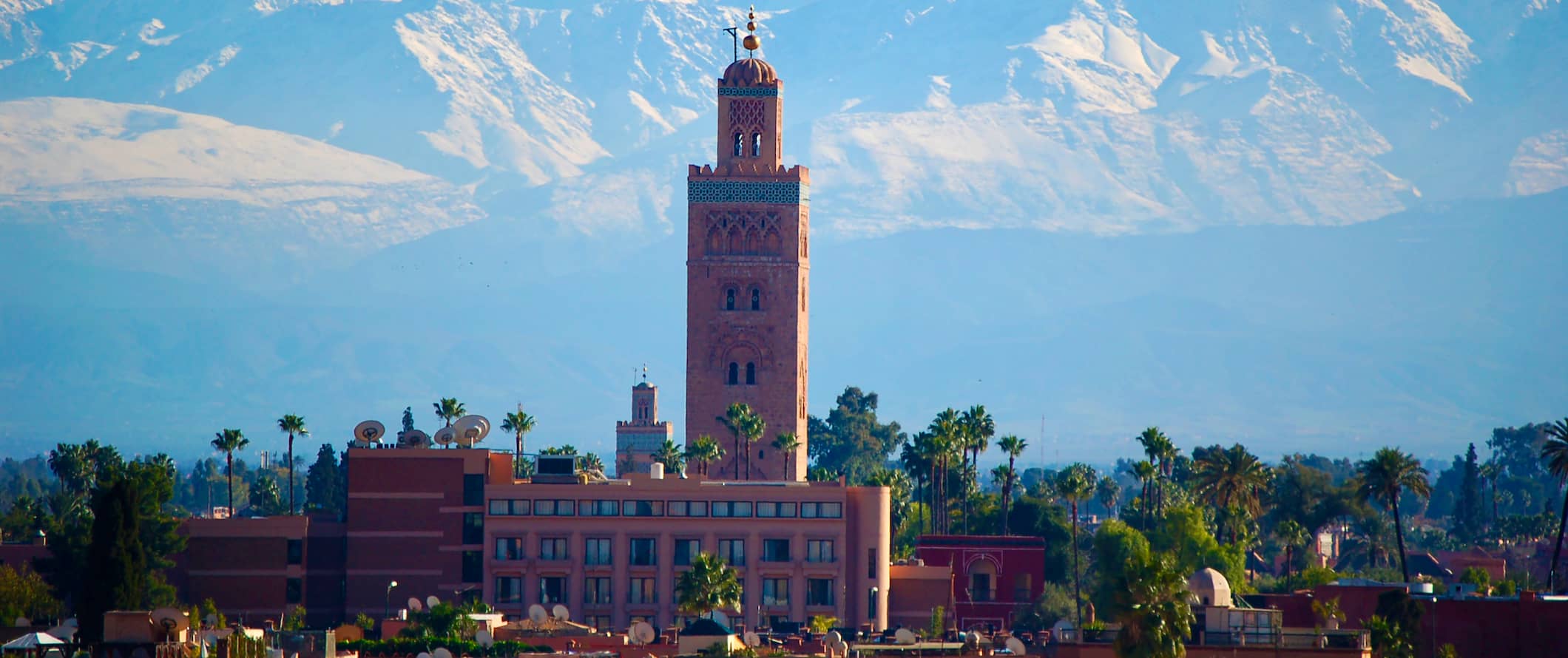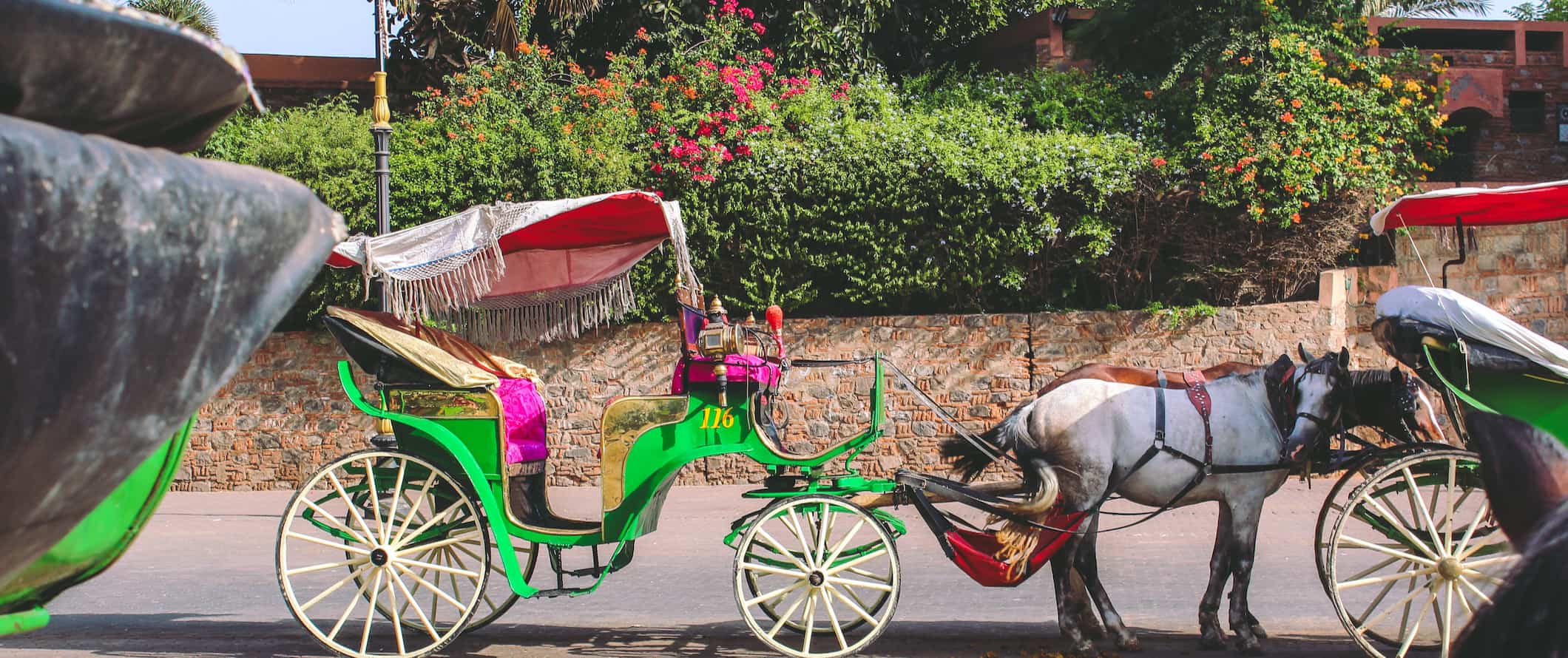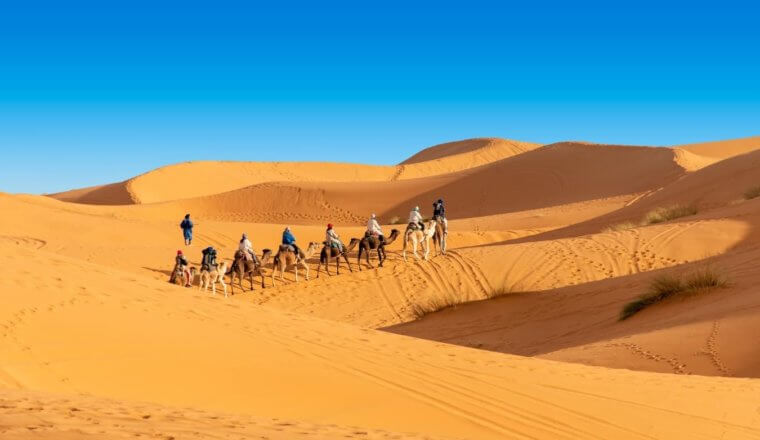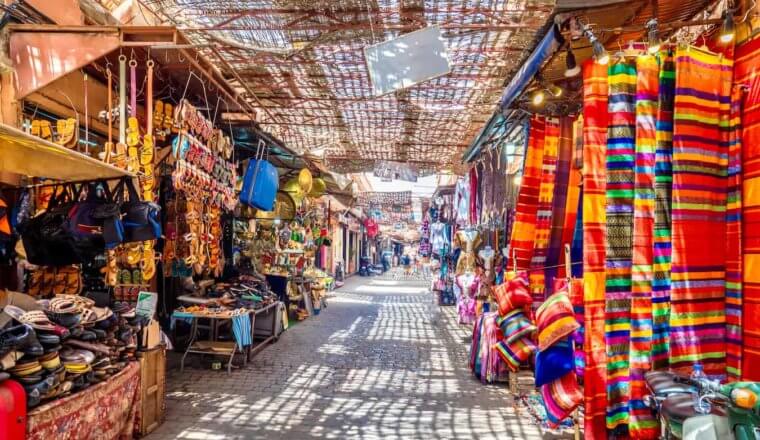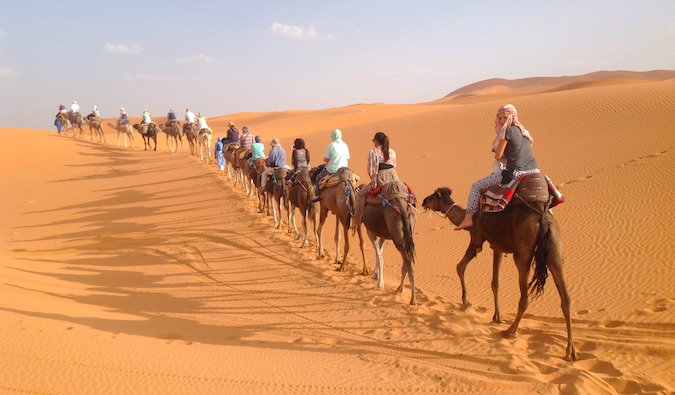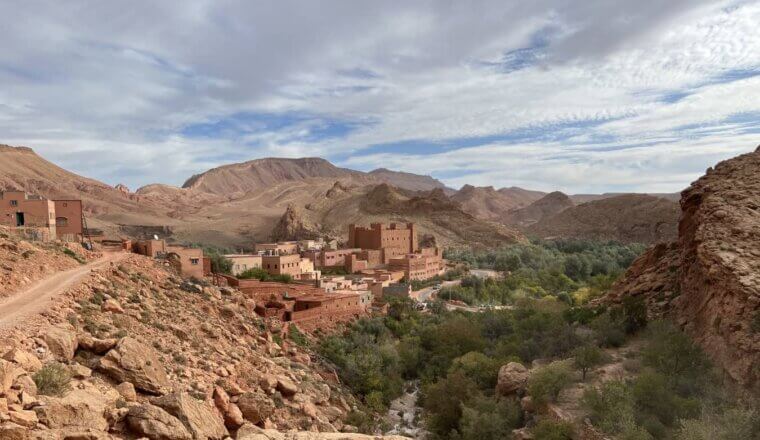Marrakesh is the fourth-largest city in Morocco and is usually on every traveler’s itinerary when visiting the North African country. My time visiting Marrakesh was everything I thought it would be: a modern mix of Moroccan and international culture, delicious food, and beautiful architecture in the medina, a UNESCO World Heritage Site.
Founded in 1070, the city has been the capital of various kingdoms and dynasties throughout the ages. But the history of the region stretches back even further, with indigenous Berbers inhabiting the area since the Neolithic era (10,000-4,500 BCE).
Though Marrakesh lacked the grit and edge that the rest of the country had, it was the most eclectic city of my trip. The famous Jemaa el-Fnaa square is truly the mess that everyone describes, with tens of thousands of people eating, shopping, getting henna tattoos, listening to bands and storytellers, and watching magicians (and snake charmers during the day). It is the busiest square in Africa. It still blows my mind how big and full it was!
Marrakesh is on the map and should undoubtedly be part of your trip to Morocco. Few travelers visit the country without stopping in this city. While parts may be touristy, it is a remarkable and beautiful city worth a visit.
This travel guide to Marrakesh can help you plan your trip, save money, and make the most out of your time here!
Table of Contents
Top 5 Things to See and Do in Marrakesh
1. Explore the town square
Djemaa el-Fna is Marrakesh’s main square, where you can find exotic street performers, snake charmers, tattoo artists, musicians, storytellers, and more. It’s huge, chaotic, crowded, and a sensory overload. At night, the market fills with food vendors and crowds of locals and tourists alike.
2. Visit the Bahia Palace
La Bahia was built in the late 19th century over the course of 14 years. Although the palace has 150 rooms, only a fraction of it is open to the public. The Grand Riad, with its studded fountains and carved wood lintels, is the oldest part of the palace and probably my favorite part. Entrance is 70 MAD.
3. Mosey through the Jardin Majorelle
The Jardin Majorelle was created by French painter Jacques Majorelle between 1886-1962. The garden is a collection of 300 species of plants from five different continents. The entrance fee is 120 MAD and another 30 MAD for the Berber Museum. The new YSL Museum costs an additional 100 MAD.
4. Walk through the Ben Youssef Madrasa
This Quranic learning center dates to the 14th century and is greatly admired for its detailed tile, woodwork, colorful mosaic walls, and Italian marble. The main courtyard has some stunning tile work. Admission costs 70 MAD. Currently closed for renovations.
5. Marvel at the Saadian Tombs
Saadian Sultan Ahmed al-Mansour ed-Dahbi flaunted his extravagance and wealth, as you’ll see at his tombs. This royal necropolis was built in the late 16th century with imported Italian marble and decorated with pure gold. The open-air museum costs 70 MAD.
Other Things to See and Do in Marrakesh
1. Visit the Maison de la Photographie
The Maison de la Photographie (Museum of Photography) opened when friends Patrick Menac’h, a Parisian, and Hamid Mergani, a Marrakshi, decided to combine their collections of vintage Moroccan photography. Together, they collected 4,500 photos, 2,000 glass negatives, and 80 documents between 1870 and 1950. Works are on display through three floors, organized thematically by content and region. Most photos are also for sale. Entrance is 50 MAD.
2. Get lost in the medina
Marrakesh’s medina, which means “city” or “town” in Arabic, is the historic walled city, with a labyrinth of alleys and stalls upon stalls to peruse. Watch the making and selling of traditional handicrafts, eat some street food, and take in the sights and smells in the historic walled quarter of the city. You’ll find stalls selling merguez sausage, grilled meats, potato tagines, maakouda potato cakes, and so much more. Don’t be afraid to get lost in the alleys and tiny streets. The alleys seem endless, but I found it less intimidating than the medina in Fez.
3. Visit Morocco’s largest Jewish cemetery
The largest Jewish cemetery in Morocco, Miara Cemetery dates to 1537 and is still in use today. The graveyard is divided into three sections: one for men, another for women, and a third for children. Due to space constraints, there are three layers of burial grounds. This is an excellent historical site and I highly suggest you visit. After visiting the cemetery, wander around the Jewish quarter, which is home to the 15th-century Lazama Synagogue. It’s the last synagogue in the quarter.
4. Relax in a traditional hammam
A hammam is a steam bath popular in North Africa. It used to be the only place where people could bathe because private bathrooms were a luxury only few could afford. They are usually found near mosques or toiletry shops and can be upscale or public (traditional). Public hammams cost about 10 MAD and you need to bring your own scrubbing glove, soap, brush, razor, shampoo, towel, and change of clothing. Hotel hammams provide the necessary kit and usually cost around 300-500 MAD. If you want to try a public hammam, go to Hammam Dar el-Bacha or Hammam Mouassine.
5. Hang out on the terrace of Grand Café de la Poste
This is an institution in Marrakesh. While the food is good, most people come for the architecture and atmosphere. Built in the 1920s, this originally was a café, hotel, and postal relay. Today, the café retains much of its original grandeur with vaulted ceilings, black and white tiled floors, leafy palms, red sofas, and leather chairs. The terrace is a fantastic spot to drink a cold beer. On the weekend, you’ll find locals and expats eating brunch and catching up. The menu is mostly French cuisine, with dishes ranging in price from 80-280 MAD.
6. Hang out in the parks
Marrakesh has a lot of parks, with everything from formal gardens with trees planted in straight rows, to expansive parks, to neighboring palaces, to Yves Saint Laurent’s blue-splashed garden. My favorites are Arsat Moulay Abdeslam Cyber Park (featuring free Wi-Fi), Jardin el Harti (over 80 years old), The Agdal Garden (over 700 acres and next to the Royal Palace), and Lalla Hasna Park (a small park right by the Koutoubia Mosque).
7. Visit the Menara botanical gardens
Located west of the city center, this botanical garden was established around 1130 by the Almohad Caliphate. The Menara pavilion, with its green pyramid-like roof, is a focal point because of its views of the nearby man-made lake. It was built in the 16th-century during the Saadi dynasty. From the gardens, you can see the Atlas Mountains in the distance. Admission is free.
8. Take a cooking class at the Marrakesh Culinary Arts Museum
Found in the mellah (Jewish quarter), this museum offers cooking classes twice a day. Each class is around two hours in duration and the menus feature Jewish and Moroccan dishes. Cooking classes are around 500 MAD. You can visit the museum for 60 MAD or 120 MAD with tastings. (Temporarily closed due to COVID-19.)
9. Stroll the ruins of El Badi palace
The “Incomparable Palace” is a massive palace of over 300 rooms, built by Sultan Ahmad al-Mansur in the 16th-century. With the sultan’s death and the decline of the Saadian dynasty, the palace fell into decline, and today the palace is a large-scale ruin. Admire the views over the city, stroll the gardens, descend into the dungeons, and learn more at the small museum inside. World Folklore Days, the biggest folk-dance festival in Africa, takes place in the palace complex each March. Entrance to the palace is 70 MAD.
For more information on specific cities in Morocco, check out these guides:
Marrakesh Travel Costs
Hostel prices – Dorm rooms with 6-8 beds cost around 60-90 MAD per night, while a bed in a room with 10-20 beds costs 40-70 MAD per night. Private rooms cost around 260-380 MAD per night. Hostels usually offer free breakfast, Wi-Fi, towels, linens, and many communal spaces designed for you to meet other travelers.
Budget hotel prices – Budget hotels cost around 270-410 MAD per night and include private bathrooms, Wi-Fi, and breakfast.
On Airbnb, private rooms start around 200-320 MAD per night. Entire homes/apartments start at around 350-550 MAD per night.
Food – Moroccan cuisine is a colorful, flavorful mix of Berber, Andalusian, and Mediterranean traditions with a pinch of French and sub-Saharan cuisine to round things out. It is a land of spices, so expect flavorful meals at every turn (the traditional ras el hanout spice mix is composed of 27 different spices). Beef, goat, and lamb are some of the most common meats, usually eaten with couscous. Fish like mackerel and anchovy are also quite common, owing to the country’s location on the coast. Be sure to try pastilla, a pastry filled with meat or seafood.
Food can be cheap in Marrakesh if you eat at the street stalls and local restaurants, especially in the main square. Most hostels include breakfast, but a budget cafe breakfast costs around 25 MAD.
Restaurants and street stalls in the souk have affordable and traditional meals such as tagine, grilled fish, and meats for 30-50 MAD. Eating Western food and in fancy restaurants starts at around 150 MAD for a dish and can go as high as 300 MAD.
Fast food (think burger and fries) costs around 50 MAD for a combo meal.
Beer is around 35 MAD while a latte/cappuccino is around 18 MAD.
In the main square, try Cafe Clock, Bakchich Cafe, and PepeNero. Try traditional Moroccan foods such as harira (a soup popular during Ramadan), tajine, and Sfenj (Moroccan style donut).
If you cook your own food, expect to pay 200 MAD per week for groceries such as pasta, seasonal produce, and some meat or seafood.
Backpacking Marrakesh Suggested Budgets
If you’re backpacking Marrakesh, my suggested budget is about 230 MAD per day. This budget covers staying in a hostel dorm, eating mostly from cheap street stalls and cooking some meals, walking or taking public transit everywhere, limiting your drinking, and sticking to cheap or free attractions like the botanical gardens.
A mid-range budget of about 500 MAD per day covers a private Airbnb room, eating out at cheap restaurants for all your meals, enjoying a few drinks, taking the occasional taxi to get around, and doing more paid activities like museum visits and visiting the palace.
On a “luxury” budget of 1,090 MAD per day or more, you can stay in a hotel, eat at nice restaurants for all your meals, drink more, rent a scooter or take a taxi to sites outside the city, and do whatever tours and activities you want. This is just the ground floor for luxury though. The sky is the limit!
Marrakesh Travel Guide: Money-Saving Tips
Marrakesh, like the rest of Morocco, is very affordable so it’s easy to visit here without breaking the bank. That said, here are some ways to save money in Marrakesh without cutting your fun:
- Eat at the markets – Stick to eating at the local markets in the medina or away from the tourist centers in the new town and you’ll spend very little money on food!
- Negotiate your cab fare – Be sure to negotiate a price before you get into the taxi. There aren’t set prices and you need to bargain hard. Ask your hostel/hotel staff for rough price estimates so you can avoid being scammed.
- Avoid faux guides – Faux guides (or false guides) linger in the medina and offer you tour services. Be forceful in saying no and keep walking away, and eventually they will give up.
- Stay with a local – If you want to save money and get some local insight into the city, use Couchsurfing. Staying with a local is the best way to get a feel for the city and learn some insider tips. There’s a small Couchsurfing community in the city.
- Avoid drinking – Even though drinking is frowned upon in the country, you can still find plenty of drinking establishments. They are overpriced and the drinks aren’t that good. Avoid drinking during your visit, save money, and align yourself closer to local norms.
- Eat from street stalls – While restaurant meals can typically cost as little as 30 MAD, street food is even cheaper. For just a few dollars, you can indulge in delicious kebabs, sausages, barbecued corn on the cob, hot roasted chicken, and huge sandwiches, among many other tasty options.
- Make change at your hotel – A lot of vendors and museums do not give change back when you pay with paper notes, and the lowest denomination you can get from an ATM is 100 MAD. Hotels and larger grocery stores are best for getting smaller bills and change. This way you can give to correct amounts, and not lose money unnecessarily.
- Bring a water bottle – The tap water here is generally safe to drink but you should bring a reusable water bottle with a filter just in case. LifeStraw is my go-to brand as their bottles have built-in filters to ensure your water is always clean and safe.
Where to Stay in Marrakesh
There several hostels in the city. Here are my recommended places to stay in Marrakesh:
How to Get Around Marrakesh
Marrakesh is a very walkable city, but the medina can be confusing, so I recommend using GPS. Outside of the medina, there are a few different methods of transportation that you can use.
Public transportation – Bus rides around the city cost 2-5 MAD. Buses are run by Alsa and run from 6am-10pm, with most buses running every 15-20 mins. Bus 1 runs from the Kasbah, through Gueliz, and Bab Doukkala. Bus 11 runs through Bab Doukkala, Djemaa El Fna, and Menara Gardens. Bus 12 runs through Jardin Majorelle, Bab Doukkala, and Hivernage.
Scooters/Motorcycles – Scooters and motorcycles are also available for rent around the city, with a half-day scooter rental costing around 180 MAD. You can find rental places near the medina.
Taxi – Taxis have a base fare around 7 MAD and cost about 4 MAD per kilometer. Don’t expect to receive change, so pay the exact price and ask to use the meter at the beginning of the ride.
A taxi from the airport to the city center runs about 60-100 MAD, while an airport express bus only costs about 30 MAD.
Always negotiate the price before getting into the taxi, as prices can inflate quite a bit when you arrive at your destination if you don’t.
Car rental – Cars can be rented for as little as 200 MAD per day for a multi-day rental. Drivers need to be at least 21. Unless you’re leaving the city, you don’t need a car to get around — though they can be handy for day trips outside Marrakesh. Just be cautious — drivers here are aggressive and accidents are common.
When to Go to Marrakesh
March-May and September-November are the best times for visiting Marrakesh. During these months, temperatures average 30°C (86°F) so the weather is hot but not unbearable.
July and August are the hottest months, with temperatures an average of 38°C (100°F). That’s just too hot to comfortably explore on foot.
Marathon des Sables takes place in Morocco each April. It is a 6-day foot race in the Sahara Desert, one of the toughest races of its kind in the world. In July, the Marrakesh Popular Arts Festival attracts fortune tellers, dancers, snake charmers, and fire-swallowers from all over the world. It’s an interesting distraction from the heat of summer when the crowds of tourists are lower.
Ramadan takes place in the ninth month of the Islamic calendar (which is based on lunar cycles so it varies every year) and lasts for 30 days. During this time, Muslims abstain from food and drink during the daytime. It is also considered a sober month in Morocco. Most restaurants and businesses are still open, but often with reduced hours.
In winter, the daytime temperatures average around 7°C (45°F), and while the days can be sunny, the nights can be quite chilly. There are fewer visitors during this time but pack a sweater.
How to Stay Safe in Marrakesh
Marrakesh is fairly safe and the risk of violent crime here is low. Like anywhere else, avoid walking through unfamiliar areas alone at night and beware of pickpocketing and petty theft.
Pickpocketing, petty theft, fake tour guides, and harassers are your most likely problems here, especially in the medina. Be firm when saying no to touts who try to sell you excursions. Beware of locals inviting you into their shop for tea, as you may end up spending a lot of money to buy something you don’t want.
Women traveling alone can attract a lot of attention, and the chances of being followed, and possibly groped, is high. Walking alone at night is generally not a good idea. Dress appropriately and respectfully. Although Marrakesh is touristy and slightly more liberal, women should still dress modestly to avoid harassment and having to spend money on extra clothing to cover up while there.
If you’re worried about getting scammed, you can read about common travel scams to avoid here.
If you experience an emergency, dial 19 for assistance (112 for mobile phones).
Always trust your gut instinct. Avoid isolated areas at night and be aware of your surroundings at all times. Make copies of your personal documents, including your passport and ID.
The most important piece of advice I can offer is to purchase good travel insurance. Travel insurance will protect you against illness, injury, theft, and cancellations. It’s comprehensive protection in case anything goes wrong. I never go on a trip without it as I’ve had to use it many times in the past.
Marrakesh Travel Guide: The Best Booking Resources
These are my favorite companies to use when I travel. They consistently have the best deals, offer world-class customer service and great value, and overall, are better than their competitors. They are the companies I use the most and are always the starting point in my search for travel deals.
- Skyscanner – Skyscanner is my favorite flight search engine. They search small websites and budget airlines that larger search sites tend to miss. They are hands down the number one place to start.
- Hostelworld – This is the best hostel accommodation site out there with the largest inventory, best search interface, and widest availability.
- Booking.com – The best all around booking site that constantly provides the cheapest and lowest rates. They have the widest selection of budget accommodation. In all my tests, they’ve always had the cheapest rates out of all the booking websites.
- Get Your Guide – Get Your Guide is a huge online marketplace for tours and excursions. They have tons of tour options available in cities all around the world, including everything from cooking classes, walking tours, street art lessons, and more!
- SafetyWing – Safety Wing offers convenient and affordable plans tailored to digital nomads and long-term travelers. They have cheap monthly plans, great customer service, and an easy-to-use claims process that makes it perfect for those on the road.
- LifeStraw – My go-to company for reusable water bottles with built-in filters so you can ensure your drinking water is always clean and safe.
- Unbound Merino – They make lightweight, durable, easy-to-clean travel clothing.
- Top Travel Credit Cards – Points are the best way to cut down travel expenses. Here’s my favorite point earning credit cards so you can get free travel!
Morocco Travel Guide: Related Articles
Want more info? Check out all the articles I’ve written on backpacking/traveling Morocco and continue planning your trip:
